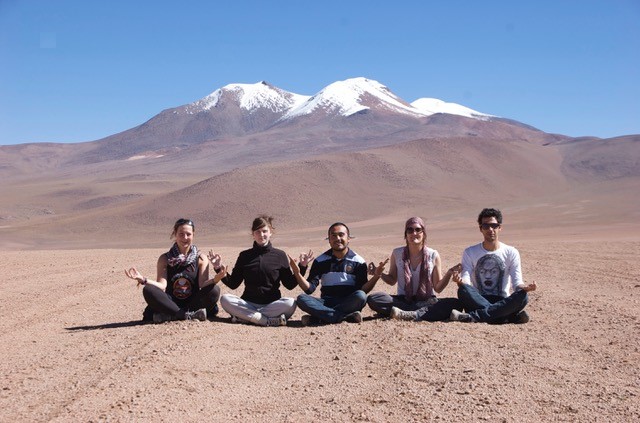We’ve highlighted 7 tips for choosing the perfect gap year destination.
A staggering 98% of respondents in a Gap Year Association survey said their gap year helped them mature and better interact with people of various cultures and backgrounds. In addition, 97% said it boosted their confidence, while 84% said it increased their academic motivation.
When you examine the statistics above, there’s no doubt a gap year can help you grow personally and professionally. And it helps if you choose the right destination to stimulate that growth.
These 7 tips for choosing the perfect destination for your gap year to ensure you get the most out of it.
1. What Do You Want out of Your Gap Year?
It’s crucial to figure out what you really want out of your gap year to ensure you’re choosing a destination that can give you that. Ask yourself what would make your gap year meaningful. Would it be e.g.
- Volunteering?
- Teaching?
- Finding employment?
- Learning a new language?
- Immersing yourself in culture?
- Adventure?
Once you define what you want out of your gap year, you can research destinations that are perfect for what you’re trying to do.
2. International or Domestic Travel?
Most people think of international travel when they think of a gap year. You fly overseas and dive into a new language, culture, and customs. However, domestic travel is also an option for your gap year. You can stay in your country but choose a place you’ve never been. So, determine whether international or domestic travel appeals to you most and if money is factor ensure your research the costs of travellling overseas versus staying in your home country.
3. Consider How You’ll Be Travelling
Consider how you’ll travel during your gap year — driving, flying, biking, etc. Although each method has its own merit, each one provides a different experience, which is important to consider when planning out your accommodations. For example, if you want to take the road less travelled, you may be best to opt for travel via train, car, backpacking or even biking. However, if you’re more focused on the actual destination, you may want to opt for more direct transportation by plane. You’re likely to have a transportation mix of some kind so its worth thinking about in terms of cost, convenience, environmental impact and quality of experience.
For each mode of travel, it’s also important to take safety precautions. Here are just a couple of precautions you should consider for each mode of transportation:
- Driving: Evaluate if your car has car safety features like lane departure warning cameras, driver monitoring systems, and automatic emergency braking. Otherwise, it’s important to practice defensive driving habits while on the road, research local roadway regulations, and always drive based on the roadway and weather conditions. It’s also important to invest in insurance and bring along documentation wherever you travel.
- Flying: You’ll find several guides out there which include tips such as: Never leave your luggage unattended and always label your luggage in case it gets lost. Listen to your flight attendants and pilots for safety instructions. Keep alcohol intake to a minimum but enjoy a glass of wine with your meal if it takes your fancy.
- Biking/Backpacking: Always pack emergency food for scenarios where you may be stranded on the side of the road. If you’re biking or walking in poor light, pack flashing gear or lamps that may stand out in the dark to protect you against other cars. Keep phones charged as best you can and ensure they have the right connectivity for the country in which you travel. Ideally, travel in pairs at least.
Once you’ve evaluated each mode of transportation and safety features you’ll opt for along the way, you’ll be that much closer to enjoying your gap year travel journey.
4. Think About Your Health and Accessibility Needs
If you live with a disability or health condition the last thing you want to do is go to a place that can’t accommodate your accessibility needs. Not only will it hinder your experience, but it’s also a safety issue. Think about your accessibility needs before landing on a destination and research as best you can. Consider accessible restrooms, elevators, and slip-resistant flooring. Destinations with fewer bright lights and sounds. Identify medical facilities in advance and understand how to get in touch with them in an emergency.
Wherever you’re going, ensure the airports, restaurants, hotels, public restrooms, public transport, and other places are equipped to accommodate your needs. Accessible travel is a must for many people, so pick a place that caters to this.
5. Stay Within Your Budget
Often, when people daydream about what they want to do during their gap year, money isn’t an object. In other words, they think about their gap year as if they had all the money in the world. In reality, they likely don’t.
This doesn’t mean you can’t have the gap year of your dreams. Instead, it means you’ve got to do some serious financial planning to make it happen. And that starts with creating a budget for your gap year. Save as much as possible before your gap year adventure and understand how you will manage your funds, what compromises you may have to make and where your priorities lie.
Take your top three destinations and research the cost of living in these places. Answer questions like:
- Cost of flights and transfers
- How much would you have to spend to live comfortably?
- What will your recurring expenses be?
- How much are activities and experiences you want to engage in?
After that, take a look at your savings and income:
- How much do you have saved?
- Will you be able to work your current job abroad, or will you need to get a new one?
- How else can you raise funds?
- Is working whilst travelling a possibility?
Organize your budget’s details and choose the destination that fits within your parameters.
6. Can You Adapt to the Culture and Language?
One of the most common travel challenges is not knowing the language. It’s incredibly frustrating to be in a place where you don’t understand the people and they don’t understand you.
When considering a destination, ask yourself if you can easily adapt to its culture and language. If you’re already have some proficiency in the language and culture, even better. If you aren’t, you should at least desire to learn the language and customs.
This makes it so adapting to the culture and language isn’t so much of an arduous task as it is an enjoyable challenge.
7. So, why this destination?
Whatever you answers to the above, the place or places you visit have to excite you in some way. Maybe they are places you’ve always wanted to visit. Perhaps you heard about them from relatives, have seen them on TV, instagram or read about them in favourite book. Go with your instinct and gut feel as much as your research. Once you’ve decided, go with an open heart and mind and immerse yourself as much as you can in the experience.
Moving Forward
The best gap year destination is unique to each individual. These 7 tips for choosing the perfect gap year destination will provide you with the meaningful experience a gap year should be.


